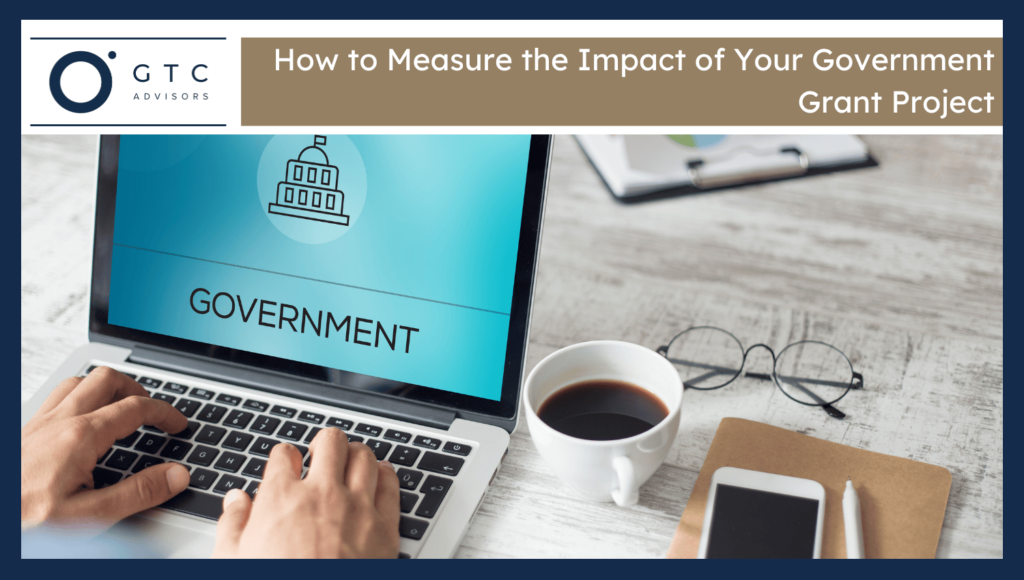Track the key performance indicators to measure the impact of government grant projects. Evaluating the impact helps grantees report to the funders. They can document where the money is spent and increase trust. KPI like financial metrics, monthly audits, qualitative and quantitative surveys provide detailed analysis about the project’s success. This impact framework also involves checking the engagement and outcome metrics. This evaluation helps the companies to request the renewal. Funding organizations approve the requests of those with successful projects and better performance. A project with better results lasts longer, and evaluating them provides evidence of success.
What Key Metrics Should You Track?
Here are the five metrics to track the success of the grant project:
- Output Metrics: Look at the quantitative output metrics. It includes the number of beneficiaries who were served, including organizations, individuals, and communities. Consider the number of events, workshops, items, manuals, and toolkits that were delivered. Output metrics also include looking at the reach of the service.
- Outcome Metrics: Outcome metrics are the analysis of qualitative changes. It includes looking at the change in behaviour, knowledge, and economic growth. Employment rates, crime rates, and increased income also highlight the outcome of the projects. The grantee can also conduct feedback surveys to see how the projects helped them.
- Financial Metrics: Financial metrics help to evaluate the success of the projects. Check the allocated budget and the money spent to see how much per person it cost. Look at the cost per income and ROI to verify the success of the project. The budget utilization rate also helps to evaluate how much money has been spent so far.
- Engagement Metrics: Engagement metrics mean looking at the number of participants who contributed to the project. Community feedback, testimonials, and the number of hours volunteers spent in the project impart the success rates.
- Sustainability Indicators: Sustainability indicators are one of the most important factors to evaluate the success of the project. They identify the ability of the grantee to carry on the project even when the fund ends. It depends on the revenue derivation technique of the owner. Businesses need careful planning, and those with greater revenue last longer.
How Do You Collect Reliable Data for Impact Measurement?
Here are the five tips to collect reliable data for impact measurements:
- Surveys and Questionnaires: Collect feedback from surveys to see if the project is successful. Create a questionnaire with three to four options for people. Write down the metrics and ask questions about them with certain examples. Write easy questions and avoid lengthy ones. Use Likert scales to get quantitative results, and make sure to test on a few people first.
- Interviews and Focus Groups: Conduct interviews to collect data to evaluate the impact. Structured and unstructured interviews both work for grant projects. Ask the questions to people sitting in front and record them for later with consent. Conduct multiple sessions until there is nothing new left behind.
- Observation and Field Visits: Observe the impact of the project to get qualitative data. Plan a structured visit and talk to the staff to get insights about the project progress.
- Document and Record Review: Document and review means using the pre-existing data to check the success of the project. Use the program records, financial audits, and beneficiary participant lists as primary sources. Government statistics and census data also help to measure the impact of the grant project.
- Digital Tools and Analytics: Use the SurveyCTO to collect feedback about the project digitally. There is grant management software to track the KPIs and automate the reporting to funders. They make it easy for funding organizations to keep a check on recipients. Make sure to use a strong and secure network to measure eth impact of the project virtually.
How Can You Analyze and Interpret the Data?
Here are the five ways to analyze and interpret the grant measurement:
- Baseline Data: Collect baseline data before interpreting the final project. This before-and-after data comparison makes it clear if the project is successful or not. For example, the baseline data says only 40% population knows about he project. Post-project data says 70% population knew about the project. It shows a 30% increase in awareness.
- Benchmarks and Standards: Compare the results of the project wth standard benchmarks to see if it is successful or not. Identify the gap areas and set a relevant benchmark to achieve the project milestone over time.
- Trends and Patterns: Trend and pattern graphs show the market success. Use teh chart and draw the trend patterns over the past few months to see the average performance of the project.
- Cost-Effectiveness: Do a cost-effectiveness analysis to check the impact of the project. Compare the cost per outcome and the identify the cost using alternatives. It helps to know if there is a need to change the strategy or not.
- Unexpected Outcomes: Unexpected outcomes are a part of the project; Look at the things that have changed so far and potential harms, which affect the ROI.
How Do You Present Impact Findings to Funders and Stakeholders?
Here are the five tips to present the impact findings to funders and stakeholders:
- Visual Reports: Visual reports leave a positive impact on the funder and stakeholders. Use cheats, customized dashboards, infographics, and videos to share the reports.
- Clear Narratives: Clarify the questions that come to the funder’s mind even before they can ask. Avoid beating about the bush and write down teh “why” and “how”.
- Case Studies: Use a problem-solution type storytelling technique to share reports. It opens up two-way communication among recipients and funders.
- Reports to the Audience: Write the report in a clean and concise way that everyone can understand. Write a detailed and clear breakdown of what has been done.
- Recommendations: Provide recommendations on teh basis of current findings and what to do for the future. Collect feedback from stakeholders and funders to make changes in the plan. It is important for those who need a no-cost extension and renewal.
How Do You Use Impact Data to Improve Future Projects?
Here are the five tips to use impact data to improve future projects:
- Project Strategies: Change the project strategies to improve the return on investment. Make changes according to what worked and what didn’t.
- Stakeholder Engagement: Share the progress report of the project with stakeholders to engage them in support.
- Grant Applications: Apply for the renewal grants on the basis of current metrics and invest wisely.
- Goals and Objectives: Set clear and SMART goals for better and practical outcomes. Attainable and measurable objectives push the grantee to achieve them at any cost.
- Build Partnerships: Use the impact data to attract new partners. It strengthens the relationships with existing collaborators and helps the grantee to build a reputation.

George C. Tagg, Jr.
George serves as a trusted counsel to business leaders, non-profit executives, and management teams. George is a licensed attorney with a master’s in international affairs and over 20 years’ experience in the U.S. Congress, Department of State, Department of Defense, global public policy, and political campaigns.


